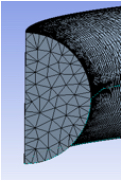The Art of Innovative Dentistry
September 19, 2016
I’m honored to present our very first Supply Clinic Spotlight on a good friend of mine, Dr. Matthew Stout. An artist at heart, Dr. Stout shaped his orthodontic residency into one of experimental innovation. Veering far from his comfort zone (and that of most of his faculty), he found himself developing a new product and managing a multi-departmental team at the University of Washington.

Dr. Stout hadn’t always imagined himself a dentist. When he attended Providence College in Rhode Island, he didn’t declare a major until absolutely necessary, and actually planned to enroll in art school before deciding to work in healthcare. While catching up on his biology requirements, he took ceramics and wheel-working classes. Not exactly the most traditional path for a dentist!
Dr. Stout wound up at Penn Dental and set his sights on specializing in orthodontics. “I saw it as a nice marriage of creative thinking and hand skills, which seemed to suit me nicely, as I look at the world through a designer’s lens… The field has a level of complexity, refinement, and design that pushes me to take things to the next level.”
From the time he entered dental school, he was self-conscious of his fixed lingual retainer, an 0.036’’ stainless steel wire that was sometimes visible to others and always visible to him. When he first arrived at UW for residency, he jumped on the opportunity to use his Master’s project to recreate his retainer. “I wanted a solution that addressed my esthetic and patient comfort goals, didn’t risk inadvertent activation and tooth movement, and bonded better.”
The prospect of redesigning a decades-old solution was the perfect blend of Dr. Stout’s background and passions. Unsurprisingly, such a non-traditional project was met with skepticism from his faculty. They were unfamiliar with the necessary material sciences and technologies. Dr. Stout’s faculty countered with a list of projects they preferred, all of which he rejected. “Measuring dozens of cephalometric radiographs just wasn’t going to do it for me.”
Sensing his passion, Dr. Stout’s program director, Dr. Anne-Marie Bollen, offered her support. “It was both exciting and nerve-wracking knowing that I was exploring new territory. It was high-risk in that if I got bogged down by something anywhere along the way, there was really nobody that could bail me out.”
Dr. Stout drew inspiration from other dental materials, and opted for Yttria-stabilized Zirconia. He drew up several designs, and tried to have a prototype milled at a local prosthodontics lab.
The project nearly came to a halt. The first two labs Dr. Stout worked with broke their first few prototypes. “You’re crazy, this isn’t possible,” they told him, and declined to offer further support.
Discouraged, Dr. Stout attempted a third lab with even more precise equipment. The lab successfully milled a single ‘exploratory prototype’ close to the dimensions he needed. This glimmer of hope was enough to keep Dr. Stout pushing forward. “I wanted to move the threshold of the materials we use as well as the production tools and process.”
Dr. Stout needed to form an interdisciplinary team. He literally started knocking on the doors of other labs across campus. “Collegiality across departments was key. We all had knowledge bases that were complimentary and could come together to form a process and product.” Dr. Stout had to learn to speak the languages of engineers, materials scientists, and computer scientists in order to move his project forward.

To the amazement of his faculty, Dr. Stout established a successful process for development of a Yttria-stabilized Zirconia fixed lingual retainer. “Retention is arguably the most important part of orthodontics. One can spend so much time making things perfect, but unless you can maintain that and adapt to physiologic changes as we age and function, we’re not accomplishing our goal.”
Applications of a retention device extend into the fields of periodontics and prosthodontics. “I see this development not as an endpoint, but rather a beginning platform to expand, refine and improve upon my creation. Sharing of ideas and concepts is so crucial for the constant betterment of patient care and outcomes.” Dr. Stout’s concept will likely be new grounds for others to further refine and innovate.
%20(1).jpg)
Now, Dr. Stout is assembling another team to improve and patent his process, and will ultimately test the prototype in clinical trials. “Accepting your failures along the way and riding over the bumps in the road is just part of the process. I’d recommend that other dental entrepreneurs trust in their natural gifts and background, and not be afraid to think outside of what they’ve been trained is or isn’t appropriate.”
Dr. Stout’s story is an inspiration to other dental entrepreneurs, and a reminder of the importance of communication, hard work, and persistence. Going door-to-door, persevering past failures, and collaborating with those in vastly different fields are so vitally important. And Dr. Stout’s success is a testament to just that.
Best of luck to Dr. Matthew Stout as he continues along his entrepreneurial path.
Ready to save with Supply Clinic?
Start Shopping!